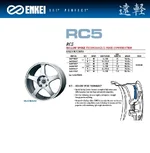You are using an out of date browser. It may not display this or other websites correctly.
You should upgrade or use an alternative browser.
You should upgrade or use an alternative browser.
Will 17"x8 rims fit ...?
- Thread starter Samaj
- Start date
badAzLava3
Member
Your new wheel will have the following chracteristics:
The clearance from stut housing to the inside of the wheel will be 9mm LESS
The outside edge of the wheel will EXTEND an extra 29mm
The clearance from stut housing to the inside of the wheel will be 9mm LESS
The outside edge of the wheel will EXTEND an extra 29mm
badAzLava3
Member
17x8 +48 wheel vs 17x6.5 +52should be
The clearance from stut housing to the inside of the wheel will be 15mm LESS
The outside edge of the wheel will EXTEND an extra 23mm
The clearance from stut housing to the inside of the wheel will be 15mm LESS
The outside edge of the wheel will EXTEND an extra 23mm
when the wheel is on the car, there is a certain amount of space (clearance) between:
A) the wheel/tire's inside edge and the suspension (the spring/strut)
B) the wheel/tire's outside edge and the fender's inner edge
rims have a width and an offset. the width is self-explanatory; the offset measures where the mounting surface is in relation to the wheel's centerline.
when you change rim width, the clearance necessarily changes. for example, if you go from
6.5" wide rim w/ +45mm offset
to a
7.5" wide rim w/ +45mm offset
the clearance on each side of the wheel will change. in this example, since the offset is the same, the differnce in width will be split equally between each side of the mounting surface- therefore, the clearance between the suspension and wheel/tire will be 1/2" LESS, and so will the clearance between the outside of the wheel/tire and the fender.
for example, if you go 1" wider with, say, a 12mm difference in offset, the clearance on one side will be 1/4" less and on the other will be 3/4" less then w/ the OEM wheel.
by changing offset along with width, you can work to fit the wheel/tire by trading off clearance on one side for clearance on the other. the tire rack has a great page explaining the technical terms of wheel sizing.
i recommend reading that so you can understand what you're dealing with, especially if you're buying expensive wheels of questionable fitment.
A) the wheel/tire's inside edge and the suspension (the spring/strut)
B) the wheel/tire's outside edge and the fender's inner edge
rims have a width and an offset. the width is self-explanatory; the offset measures where the mounting surface is in relation to the wheel's centerline.
when you change rim width, the clearance necessarily changes. for example, if you go from
6.5" wide rim w/ +45mm offset
to a
7.5" wide rim w/ +45mm offset
the clearance on each side of the wheel will change. in this example, since the offset is the same, the differnce in width will be split equally between each side of the mounting surface- therefore, the clearance between the suspension and wheel/tire will be 1/2" LESS, and so will the clearance between the outside of the wheel/tire and the fender.
for example, if you go 1" wider with, say, a 12mm difference in offset, the clearance on one side will be 1/4" less and on the other will be 3/4" less then w/ the OEM wheel.
by changing offset along with width, you can work to fit the wheel/tire by trading off clearance on one side for clearance on the other. the tire rack has a great page explaining the technical terms of wheel sizing.
i recommend reading that so you can understand what you're dealing with, especially if you're buying expensive wheels of questionable fitment.
so which offset would be better. keep in mind 17x8 inch rims with 225/40/17 tires. 5x114.3 with a 35, 47, or 48 mm offset? I just want to make sure that these rims will fit in the wheel well when lowered and not stick out, but also not touch the the strut support on the inside of the wheel.
fishmonkey01
Member
- :
- 04 mazda 3s 5-door
so i just got a set of 17x7 adr dv-8 with a 40 mm offset will those fit?
(rofl)
(rofl)
fishmonkey01
Member
- :
- 04 mazda 3s 5-door
and i want to put 215/45/17 tires on it
fishmonkey01
Member
- :
- 04 mazda 3s 5-door
im going to go try the 45's the roads here in columbia,sc are less than smooth in a lot of places
New Posts and Comments
- Replies
- 2K
- Views
- 500K
- Replies
- 37
- Views
- 25K
- Replies
- 0
- Views
- 296

